Horseback Safari in South Africa: A horseback safari to meet the "big five": lions, leopards, elephants, rhinos and buffaloes...
- Observation of the "Big Five": lion, leopard, elephant, rhinoceros and buffalo
-29.466667008972, 29.266667
Horseback riding safari with the backdrop of the Drakensberg Mountains through the African bush in Karongwe Private Game Reserve and Greater Makalali Private Game Reserve. These reserves are home to diverse ecosystems ranging from thick bush to open plains, forests, hills and coppices, rivers and ravines. The river systems are extensive and are the lifeline of the area and support an impressive population of tall trees, plants and wildlife! Wildlife is abundant and includes elephant, black and white rhino, lion, leopard, buffalo, cheetah, spotted and brown hyena, sometimes wild dogs, giraffe, zebra, wildebeest, kudu, bushbuck, steenbok, duiker, impala, black-backed and side-striped waterbuck. As well as: jackal, badger, baboon, vervet monkey, mongoose, warthog, bushpig, tortoise, porcupine, aardvark, civet, genet, caracal, serval and hare. Aquatic species include: hippopotamuses, crocodiles, otters and turtles. A wide variety of bird species can be seen, especially near the large dams and along the rivers.
HORSEBACK SAFARIS
SEE ALL OUR OFFER: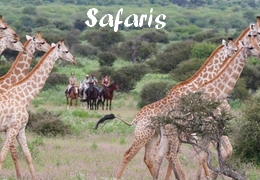

BOTSWANA & SOUTH AFRICA HORSE RIDING SAFARI
INDICATIVE ITINERARY:
Day 1 - On arrival at Hoedspruit (or Phalabowra) airport, you will be met and transferred to Wait A Little in time for afternoon tea. You will be shown to your room and introduced to the team before a safety briefing and your first ride. The orientation ride introduces you to the area around the camp and allows you the chance to relax and unwind after your long flight. You will become accustomed to the horses and riding style whilst perhaps spotting your first zebra or giraffe. Sundowners whilst watching the Drakensburg mountains over the river is followed by a three-course dinner.Your first night in the African bush is probably the most exciting as the sounds of the bush echo around you.
Day 2: Karongwe.
You will be woken early with tea or coffee in your room. After a light breakfast, you set out on your first full morning ride. Whatever tracks your guide may find will determine the route you take. As the reserve has an abundance of game you will see lots of animals on your way and hopefully already encounter one of the Big Five. Return to camp for lunch and a siesta through the heat of the day. After tea/coffee you set off on a shorter afternoon ride, ending at a sundowner spot where you can watch a colourful African sunset.
Day 3 Karongwe.
On this morning’s ride, you may be on a different horse, you will set off to explore more of this beautiful area. It can take you through dry riverbeds or flowing rivers, past rock formations, and over open areas, always with the view of the Drakensberg Mountains. During your lunchtime siesta, you may wish to have a relaxing massage - this is available at extra cost. In the afternoon we go for a game drive to give your body a rest from the long hours in the saddle. Driving along the Makuthswe river you will hopefully find buffalos, elephants, lions or other animals, followed by sundowners in a beautiful spot. We return to camp in the dark using the spotlight to seek out nocturnal species..
Day 4 - Beacon Rock.
Another fantastic morning of riding through the reserve, perhaps finding the elephant splashing through the river, or the lion relaxing on the sands. After lunch you pack your bags to head off on a further adventure. The gently undulating roads lend themselves to long canters as you pass between the twin rock formations of Lion and Leopard Hill. At Beacon rock you can scramble to the summit for a view over the entire lowveld escarpment and the whole reserve, watching the sun set behind the Drakensberg escarpment. Spend the night around the campfire, surrounded by your horses, having enjoyed a traditional braai that is cooked over the fire before settling down to sleep under the stars..
Day 5: XiDuli Lodge.
Wake to the rich colours of the sunrise and set off on a long ride. You cross from the Karongwe Private Game Reserve onto the Greater Makalali Game Reserve which has large open plains where you may find yourself cantering alongside zebra, wildebeest or giraffe. Makalali is also home to the endangered black rhino, which adds to the excitement of sightings from horseback. You arrive at XiDulu in time for lunch. Built on the edge of a dam with a resident pod of hippos, you can view the game from your room, the viewing deck, or the infinity pool. Elephants often visit the dam to cool off during the midday heat, whilst lions or hyenas are often heard and seen around the lodge at night. In the afternoon you will be taken on a game drive, to explore the large Reserve. Your guide will track the footprints and signs left by the animals earlier in the day. If you are lucky, he will find animals such as lions, rhinos, hyenas, elephants,s or anything else exciting for you. After watching the sun set with a drink in hand, you continue your game drive with the spotlight in the hope of spotting bushbabies in the trees or perhaps even a leopard.
Day 6: Makalali Game Reserve.
Today's ride is a thrilling one as you head off exploring more of the Reserve, cutting through the bush at a canter, twisting, and turning around the trees. "Bushwhacking" is as much fun for your horse as it is for you! You may come across branches or trees felled by elephants which invite you to jump them. This might lead you to Makalali’s river systems which are surrounded by huge jackal berry and sycamore-fig trees and give you a nice cover for hot days. After a long morning ride, you arrive back at XiDulu and with the view of the dam, Ana’s brunch will taste amazing. In the afternoon you go on another game drive with your experienced guide. Followed by a three-course meal prepared by your host.
Day 7: Wait a Little Main Camp.
This morning you say goodbye to XiDulu and head back to Wait A Little. There are opportunities for long canters, and perhaps even a gallop on the sandy tracks.You'll be back at Wait A Little in time for lunch and another siesta. The afternoon ride and sundowner will be sad, but beautiful as you watch the African sun set for the final time. The farewell dinner is usually something special, such as kudu or eland fillets with a sherry sauce.
Day 8: Departure.
An early wake-up call to ensure there is time for a quick and sporty final ride around the reserve. Brunch will be served on return to camp before being transferred to the airport.
* Please note that due to changes in weather and other unforeseen events, the itinerary and accommodation used may change at the last minute.
MEETING:
Day 1 (Saturday) at Hoedspruit or Phalaborwa airport. Paid transfer to the lodge.
DEPARTURE:
Day 8 (usually Saturday) at Johannesburg airport.
Please book flights that depart no earlier than 8 p.m.
FLIGHTS:
Flights from/to Johannesburg are not included in our prices because it is generally more interesting to book your flights yourself, an inclusive flights package is generally more expensive with agency commissions. However, we are at your disposal to help you find the best rates: free service.
Before booking your flights: send us your schedules to check the consistency with the transfer schedules.
RIDING ABILITY: ![]()
You must be an experienced riders. You must ride regularly (at least once or twice a week) and be comfortable at posting trot, light seat canter and gallop, as well as being able to do small jumps should you have to. You must be able to control a horse independently of the group at all paces.
On the first afternoon ride in South Africa: there will be a short, simple riding test out in the bush. Guests will be asked to take part in a single file group canter. Then they will ride their horse away from the group between three points, varying the pace between a collected and an extended canter. The first exercise is to demonstrate that the rider is able to control their horse at an even pace within a group canter, without overtaking or allowing large gaps to develop within the group. The second is to demonstrate their ability to control their horse independently from the group. Those who fail, will not be allowed to ride in the group. They will be brought down to the lodge once a day for a shorter, slower ride, either on their own or with other riders of similar ability staying in the lodge. No financial compensation can be requested in this case.
RYTHM:
Horse paces are the walk for animal observation, fast between the observation zones. 4-6 hours per day on average (20-30 km per day).
AGE:
The usual minimum age is 16 but exceptions can be made for private groups or very competent riders. Riders under the age of 12 cannot be accepted.
GUIDES:
Guides leading the safari have many years’ experience and most have grown up in the area and know the bush like the back of their hand. Our guides have either professional or assistant guiding licenses with the Botswana Qualifications Authority. They are qualified to use firearms and qualified in first aid. All rides are conducted by two experienced professional guides. The lead guide is armed with a rifle and a bull whip. All management staff and guides do regular first aid training with a specialized doctor for remote areas. The lead guide has a local phone and a radio for use in emergencies.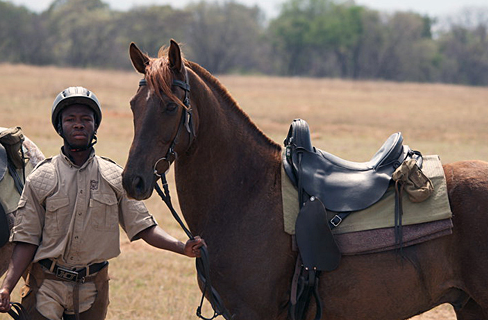 HORSES:
HORSES:
A herd of 96 horses in South Africa and 53 horses in Botswana. The herd is comprised of Boerperds, Throroughbreds, Warmbloods and Arab crosses. They range in size from 14.3hh to 17 hh. Their schooling generally concentrates on English style, although the horses neck rein when in the bush. They respond easily and lightly to the aids. All of the horses have been individually selected for their temperament and "ride-ability" on safari. They are from the various South African breeds, which are well known for being of a hardy nature and able to cope under extreme conditions. Horses have been hand selected for their endurance, courage and responsiveness. The philosophy has entailed managing horses as a free roaming herd within large tracts of natural pasture, rather than in stables or paddocks. Horses are at ease with each other and within their environment, which generates calm and contented natures.
TACK:
Saddles are South African McClellan’s, a cavalry saddle designed for long hours of riding, they offer particular comfort and airflow for the horses back and padded seats and fenders for the rider's comfort.
ACCOMMODATION:
During this horse riding safari, riders stay in 3 different camps. 4 nights at the main Wait a Little camp, 1 night at Beacon Rock and 2 nights at the luxurious XiDulu lodge.
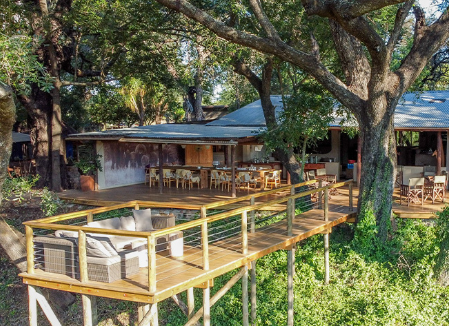
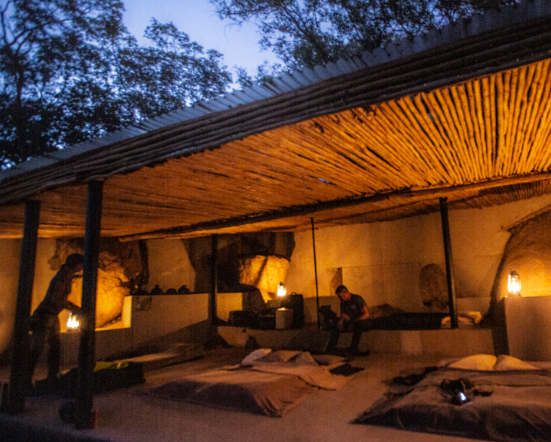
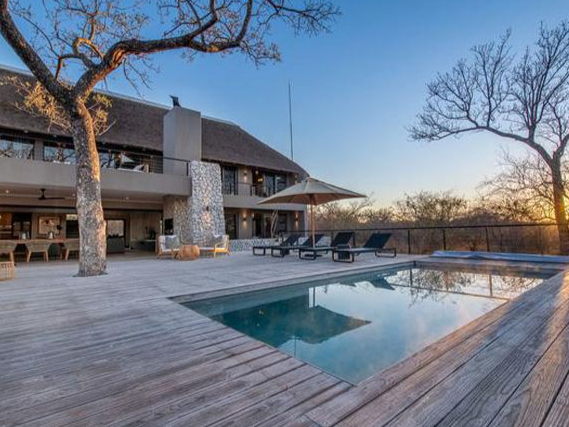
MEALS:
After a long day in the saddle, you are sure to work up an appetite! You won't be disappointed with the delicious cuisine on offer. Enjoy hearty meals, delicious snacks and warm hospitality. Dietary restrictions can be accommodated by booking in advance.
2025 PRICE / PER PERSON:
4950 € in shared rooms & tents for 2 people
Booking fees: 15 €
PRICES INCLUDE:
Horse and tack rental, local guides, accommodation, meals, drinks, road arrival transfer from Johannesburg airport, flight departure transfer to Johannesburg airport, South Africa to Botswana transfer during the safari, the financial guarantee of your payments by our deposit of travel operator.
PRICES DON'T INCLUDE:
Individual insurance, personal expenses, tips, local taxes ($30 to be paid locally), flights to/from Johannesburg, anything not indicated in "the price includes".
INSURANCE:
A civil liability and travel insurance (assistance/repatriation) is compulsory. A cancellation insurance is strongly recommended.
A payment by credit card can make you benefit from its possible insurance (check your contract).
We offer to Europe Union, Switzerland, Liechtenstein, Norway residents: the Chapka insurances.
Cap Security: full insurance with cancellation. Cap Cancellation: cancellation only.
See prices & information
FLIGHTS:
Flights to/from Johannesburg are not included because it is more interesting to book directly your ticket: a transport package included is generally more expensive with agency commissions. However, we are at your disposal to help you find the best prices or to offer you a flight included package on request.
Availability is indicative and may vary quickly: contact us to check the date you are interested in
| Dates | From | Infos | Contact |
|---|---|---|---|
| - | 4950€ | SOLD OUT | Information request |
| - | 4950€ | SOLD OUT | Information request |
| - | 4950€ | SOLD OUT | Information request |
| - | 4950€ | SOLD OUT | Information request |
| - | 4950€ | SOLD OUT | Information request |
| - | 4950€ | Information request | |
| - | 4950€ | Information request | |
| - | 4950€ | Information request | |
| - | 4950€ | Information request | |
| - | 4950€ | Information request | |
| - | 4950€ | Information request | |
| - | 4950€ | Information request | |
| - | 4950€ | Information request | |
| - | 4950€ | Information request | |
| - | 4950€ | Information request | |
| - | 4950€ | Information request | |
| - | 4950€ | Information request | |
| - | 4950€ | Information request | |
| - | 4950€ | Information request | |
| - | 4950€ | Information request | |
| - | 4950€ | Information request | |
| - | 4950€ | Information request | |
| - | 4950€ | Information request | |
| - | 4950€ | Information request | |
| - | 4950€ | Information request | |
| - | 4950€ | Information request | |
| - | 4950€ | Information request | |
| - | 4950€ | Information request | |
| - | 4950€ | Information request | |
| - | 4950€ | Information request | |
| - | 4950€ | Information request | |
| - | 4950€ | Information request | |
| - | 4950€ | Information request | |
| - | 4950€ | Information request | |
| - | 4950€ | Information request |
CLIMATE:
Month | Jan | Feb | Mar | Apr | May | Jun | Jul | Aug | Sep | Oct | Nov | Dec |
Average High Temperature (°F) | 84 | 84 | 82 | 79 | 75 | 70 | 70 | 75 | 80 | 82 | 83 | 84 |
Average Low Temperature (°F) | 63 | 62 | 60 | 54 | 47 | 41 | 41 | 45 | 51 | 56 | 59 | 62 |
Average High Temperature (°C) | 29 | 29 | 28 | 26 | 24 | 21 | 21 | 24 | 27 | 28 | 28 | 29 |
Average Low Temperature (°C) | 17 | 17 | 16 | 12 | 8 | 5 | 5 | 7 | 11 | 13 | 15 | 17 |
Average Precipitation (days of rain) | 10 | 8 | 8 | 6 | 1 | 0 | 0 | 0 | 1 | 6 | 10 | 11 |
SEASONS:
The climate over most of Southern Africa is temperate. Hot, dry conditions are usually encountered in the Tuli region. Heavy summer thunderstorms of short duration in the late afternoon and evening may be experienced. Rainfall occurs mostly during the summer months (October - March).
Summer (December to February):
The temperatures are high and there is a lot of humidity in the air. The chances of convectional thunderstorms are great. Some of the summer migrant birds begin to arrive. The characteristic call of the Red-chested Cuckoo rings out clearly, heralding the approach of better times for all. Once good rains have fallen, the small, drab, but extremely vocal Monotonous Lark keeps the bush awake day and night with its irritating call, as they perch on every treetop.
Kudus calve and there is a good chance of seeing late Impala lambs, tottering along on spindly, wobbling legs behind their mothers. Due to the heat, the animals wisely begin to seek shade before 8 o’clock in the morning, only becoming active again in the late afternoon, just prior to sunset. Tropical thunderstorms are a regular afternoon feature and there is a high probability of flooded rivers to add some excitement to game drives.
Autumn (March to May):
The transition from summer to winter occurs rapidly in the Limpopo Valley. Finally the searing heat of summer begins to abate and there is less likelihood of rain. This is a truly splendid time of the year. It is now Autumn and the daily temperatures are most pleasant with balmy days and nights. Temperatures begin to drop rapidly after sunset and both evening and morning game drives require warmer clothing. Although chilly in the morning, the days are clear and pleasant with crisp blue skies. Now that the rains are over, the veldt begins to dry out and game begins to congregate around the major watercourses, such as the Limpopo and associated wetlands, as well as the artificial waterholes scattered throughout the reserve.
A few late Kudu calves may make a bemused appearance in the beginning of March. Large nursery herds of gawky Impala young are found, kept under some control by the watchful eyes of their mothers.
The bush is still dense, but the bright shades of green are starting to become duller as the year progresses. As the vegetation begins to thin, the elusive leopard is more frequently seen. Lions, which dispersed with the game during the wet season, now begin to concentrate their activities in the central area of Mashatu.
Winter (June to August):
Winter is now upon us and has spread its chilly grip on Mashatu. The days are still good, with crisp mornings. The nights can be very cold.
Most of the natural pans and pools have now completely dried up. Elephant and a host of other species begin to frequent the artificial waterholes at both Main and Tent Camps, which makes for exciting mealtime viewing. Predator sightings are good at this time of the year, due to the thinned out vegetation and concentrations of game, cheetah however are scarce. In general the game is more active later into the day.
This is also a favorable time to visit the archaeological site at the Motloutse River. The summer vegetation has disappeared and a host of interesting features are now visible.
Towards the end of winter, the floodplains and grasslands adjacent to the Limpopo are very dry and barren. The bush has become harsh and almost inhospitable, with absolutely no groundcover, only dust and rocks visible for kilometers. The veldt has all the typical winter hues of brown and red, as the Mopane leaves start turning. The weather is fine with temperatures increasing slightly. The early mornings and evenings being not as cold as in June or July. August is a showy month, with respect to sunsets. Due to the very dry conditions, large quantities of dust is taken up into the air, giving rise to spectacular pyrotechnic displays as the sun sinks below the horizon.
Spring (September to November):
The bush is still very dry, a condition exacerbated by winds, which blow from August through to October. Temperatures begin to steadily increase and conditions are becoming desperate for many of the herbivores. This is due to sub region frontal systems touching on the Limpopo Valley, bringing superheated air into the region. There may be an occasional tropical thunderstorm, but this early rain is sucked up like a sponge by the barren earth. This welcome water is however not enough, and seldom results in a notable floral display. Many trees begin to blossom, in anticipation of the rapidly approaching summer. The vibrant hues of the blossoms enliven the bush, providing a bountiful treat for baboons and other hungry inhabitants of the bush, all of whom have struggled through the lean winter months. Temperatures begin to creep upwards and game drives are once again early morning and late afternoon affairs, as a wise means of avoiding the debilitating midday heat.
Predators have a field day, as many of the game are weak and tend to restrict their activities to the area close to the waterholes. The lack of dense vegetation and the dry powdery soil make tracking lion and leopard an easier task and often result in exceptional sightings. Elephant listlessly wait out the dry season, moving from waterhole to waterhole, where they take full advantage, wallowing and drinking for hours. They will feed on the surrounding vegetation, moving into the bush on feeding forays when temperatures have dropped sufficiently for them to forage out of the protective shade. It is also at this time that eland begin to calve.
